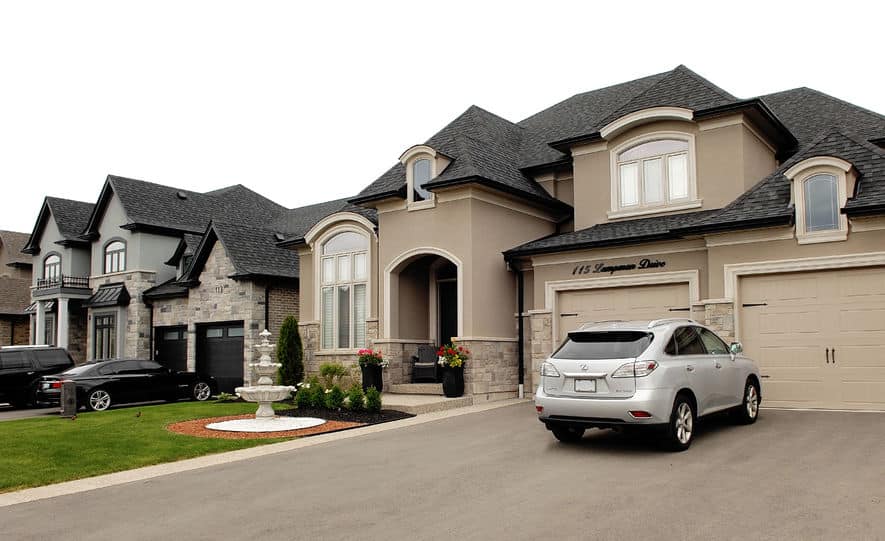Discover how a Canadian family achieved 239% returns using strategic...
Read MoreCDs vs. High-Yield Savings Accounts: The Smartest Way to Grow Your Savings in 2025
With mortgage rates still lingering near 7%, many homeowners are wondering whether refinancing in 2025 is worth considering—or if they’re better off sticking with their current loan. Despite hopes for a rate drop in the new year, the reality is that mortgage refinancing remains a tough call for most.
So, should you refinance now or wait it out? In this guide, we break down the current landscape, when it might make sense to refinance, and the smart alternatives homeowners are turning to.

The Mortgage Refinance Slowdown: What Happened at the End of 2024?
Refinancing activity took a noticeable dip during the 2024 holiday season. According to data from the Mortgage Bankers Association (MBA), refinance applications dropped by 36% in the week ending December 27, 2024, compared to two weeks earlier—even after accounting for the Christmas holiday.
Meanwhile, total mortgage applications were down nearly 22%, and purchase applications fell by 13%. The culprit? Rising rates.
MBA’s data showed 30-year fixed mortgage rates inching close to 7%, which discouraged both new purchases and refinancing. As Mike Fratantoni, MBA’s chief economist, put it: “With rates rising during a time when housing activity is already low, it’s no surprise that applications declined.”

Why Most Homeowners Should Keep Their Current Mortgage
The reality is that the majority of U.S. homeowners already have excellent interest rates. CoreLogic data from September 2024 shows that around 80% of mortgages carry rates below 5%—and many were locked in under 3% during the pandemic.
Unless your current rate is significantly higher than today’s market rates, refinancing may not offer real savings—especially after factoring in closing costs and fees.
🔍 Quick Tip: Refinancing from 7% to 6% might save money, but going from 3.5% to 6.5% won’t. Run the numbers carefully.
That said, there are a few key situations where refinancing could still make sense in 2025.
When Refinancing in 2025 Could Be Worth It
1. You Can Lock in a Lower Interest Rate
If you’re currently paying 7% or more, and a new loan offers at least a full percentage point lower, refinancing could be financially smart.
Mortgage broker Reed Letson recommends doing a simple breakeven analysis:
Monthly savings from the new loan
Total refinancing costs
How long you plan to stay in the home
For example, if you save $250 a month and refinancing costs $5,000, you’d break even in 20 months. Planning to stay in your home for years? A refinance could save you thousands.
2. You Want to Change Your Loan Term
Shorter loan terms like 15 years often come with lower interest rates, which can lead to significant savings in interest over time. But they also come with higher monthly payments.
On a $300,000 mortgage at 6.7% for 15 years vs. 7.0% for 30 years, your monthly bill could be over $650 more with the shorter term. However, over the life of the loan, you’d save over $240,000 in interest.
Not ready for that payment increase? You can always refinance back to a 30-year term to reduce monthly costs—especially if your income or budget changes.
3. You Want to Tap Home Equity
If your home has gained value, you may be sitting on a valuable resource—your equity. In 2024, U.S. homeowners gained an average of $25,000 in equity, according to CoreLogic.
A cash-out refinance allows you to pull money from your home to fund:
Home renovations
High-interest debt consolidation
Investment property purchases
However, this comes at a cost—often a higher rate and longer repayment timeline. As the CFPB notes, many who take cash-out refinances may carry mortgage debt into retirement.
Considering a HELOC Instead of a Refinance?
If you want access to your home equity without giving up your low-rate mortgage, a Home Equity Line of Credit (HELOC) may be a better option than a full refinance.
HELOCs work like credit cards:
You can borrow as needed during the draw period
You only pay interest on what you use
The rate is typically variable and tied to the prime rate
Reed Letson suggests asking your loan officer for a blended rate—a calculation that combines your current mortgage rate and the HELOC rate. If a full refi would push you into a higher blended rate, a HELOC may offer more flexibility at a lower total cost.
Letson shares his personal experience:
“My wife and I opened a $70,000 HELOC during COVID. It gave us peace of mind for unexpected expenses without paying interest on unused funds.”
But be cautious—since HELOCs are secured by your home, they require responsible borrowing. And variable interest means your payment could rise over time.

Should You Refinance With Your Current Lender?
It depends. Some lenders offer closing cost discounts or loyalty perks if you refinance through them. With refinance closing costs averaging 1–4% of your loan amount (around $3,000–$12,000 on a $300K loan), even a small discount can make a difference.
Still, it’s smart to compare rates across multiple lenders. Mortgage brokers can streamline the process by accessing wholesale offers from dozens—or even hundreds—of lenders using a single application.
💡 Pro Tip: Ask your lender to match or beat other offers. If they want to retain your loan, they may negotiate.
Final Thoughts: Should You Refinance in 2025?
For most homeowners, holding your current mortgage is still the best financial move in 2025—especially if you’re locked in under 5%. But if you have a higher rate, need to access equity, or want to change your loan terms, refinancing can still be a smart decision in the right context.
Just be sure to:
Calculate your breakeven point
Weigh costs vs. long-term savings
Consider a HELOC if flexibility matters more than locking in a new rate
Rates may eventually fall—but patience and planning will pay off.
You may also interested in
Canadian Soldier Achieves 204% ROI with Investment Loan and Segregated Fund| AiF Clients
Zack, a Canadian soldier in his 40s, turned limited savings...
Read MoreFrom $100K to $520K: How a Millennial Actuary Couple Achieved a 154% Leveraged Return| AiF Clients
Discover how a millennial actuary couple used investment loans and...
Read MoreCan Non-Residents Invest in Segregated Funds in Canada?Hazel’s Journey with Ai Financial| AiF Clients
Hazel, a non-resident mother in Canada, invested CAD $200,000 across...
Read MoreFrom Anxiety to Empowerment: How a Mom of 3 Gained $67K in 20 Months | AiF Clients
Zara, a working mom of three, turned $200K into $259K...
Read More




